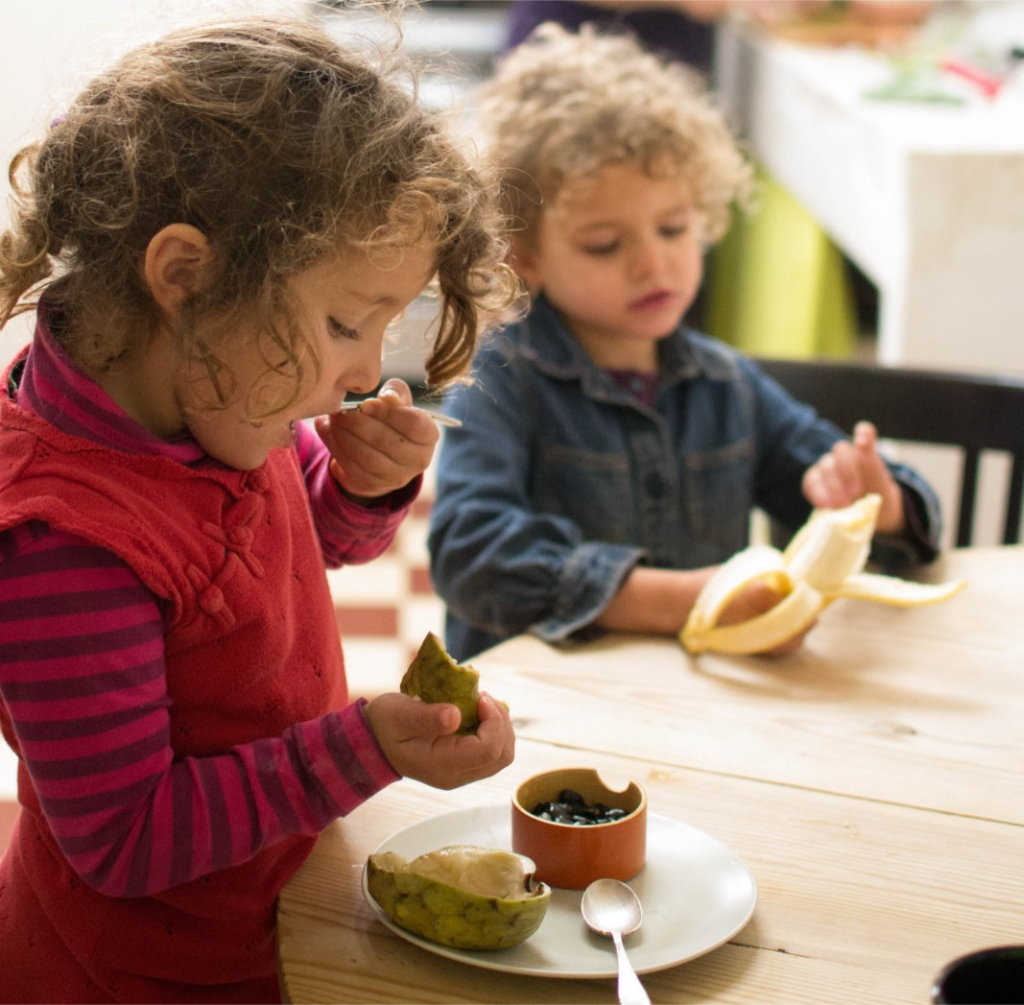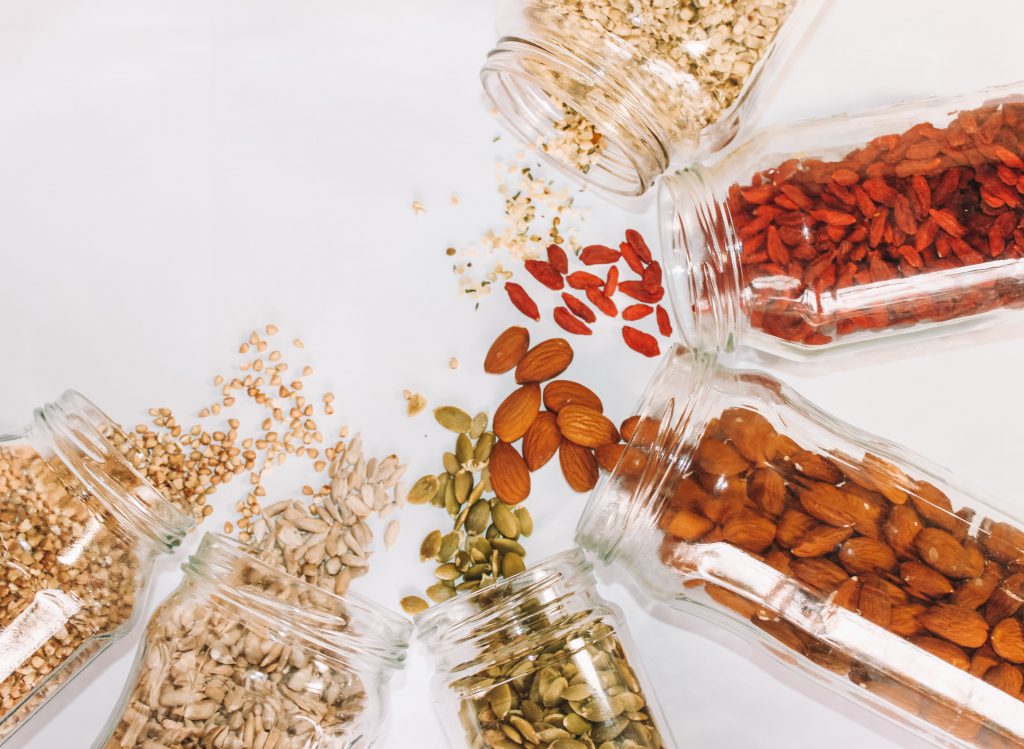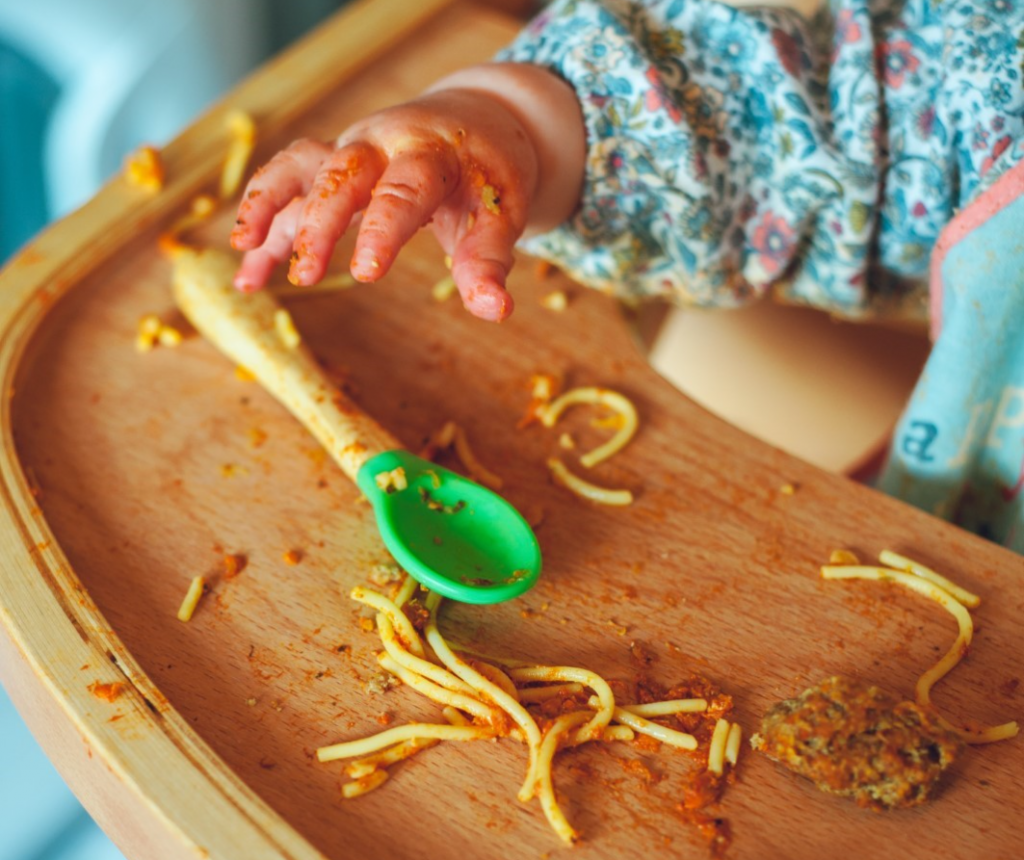Reducing the risk of choking for children
Every parent knows the situation – you are not looking at your child for a second and the toddler takes immediately the opportunity to put something in their mouth. If it is the dog’s toy, some food crumbs, or socks that are just laying around. Toddlers discover the world with their mouths and they do not care about what it is. Nevertheless, as a parent, you must be extra careful as small children are taking the risk of choking. One of the biggest risks of choking for children is food. In this article, we will explain which food is the most dangerous for children to choke on.

The top 5 most dangerous foods to choke on:
- Big chunks of meat – without chewing it very well, it can be extremely dangerous for children.
- Nuts – a big amount at once should be avoided. Offer one by one to your child.
- Hard candy – difficult to bite and when swallowing at once it can get stuck in the throat.
- Seeds – children do not really bite seeds and a generous portion can lodge airways.
- Hot dogs – extremely easy to block the airways of the child.

With a special focus on toddlers under the age of 4 years, the following 10 foods should be avoided to reduce the risk of choking:
- Grapes – can easily get lodged in a toddler’s throat as it is very slippery. To reduce the risk, always cut grapes in pieces no larger than 3cm.
- Popcorn – what would be a movie night without some nice popcorn? Offer toddlers a child safe alternative.
- Chips – not only do they have sharp edges but when getting stuck in the throat it can be very painful and dangerous for children.
- Carrot sticks – children often think they could eat them at once. Make sure they chew them very well before swallowing.
- Cherry tomatoes – like the grapes, cherry tomatoes should always be cut in small pieces.
- Raw vegetable chunks – instead of offering sticks, cut raw vegetables in ways (grated or diced) that make it easier for children to chew.
- Cheese chunks – even when cut in small pieces, the hard texture of cheese can become stuck in the back of the throat and block the airways.
- Sticky candy – like caramel or marshmallows should be avoided.
- Peanut butter – this food is very sticky and thick which makes it hard for children to swallow properly which can block the airways.
- Chewing gum – Swallowing a generous portion of gum can block the digestive tract.

How to prevent choking on food for children?
- Consider the age of your child
Based on the age of a child, there are several aspects to consider when it comes to food and eating. Children under the age of two do not have their back teeth yet. Therefore, you should only give them food that is easy to chew. Be careful with fresh fruits and raw vegetables.
- Cut the food into small pieces
The food should be cut into pieces that are so small enough to not get stuck in the throat of your child. Furthermore, give your toddler the food piece by piece so they will not rush eating and risking to choke.
- Make them sit and focus
Children at any age should sit down while eating any sort of food. Do not let them run around or play while eating something! It is important to always keep an eye on them while they eat to make sure everything goes well and they will not lay down while eating. Furthermore, you should explain to your child that the food must be swallowed properly before they start talking or laughing.

Following these steps will reduce the risk of your child choking on food. If your child accidentally chokes on food, you need to act fast. The following paragraph will explain how to act during a choking emergency.
Choking emergency: What to do now?
Even though all the necessary precautions have been taken, it can still happen that your child chokes on food. This can block the air from entering the lungs. Children are not able to help themselves, therefore your help is important to help your child to breathe again.
If choking occurs make use of a forceful thrust beneath the ribs and up into the diaphragm to pressurize the air in the chest and pop the obstacle out of the airway:
Follow these steps:
- Knee down behind your child, reach around, and locate their navel.
- Make a fist with one hand and place thumb side against the abdomen, just above the navel and below the ribs.
- Grasp your fist with the other hand.
- Quickly thrust inwards and upwards into abdomen.
- Each thrust needs to be given with the intent of expelling the object.
- Continue until the child can breathe normally.

The Choking Emergency Guideline to download and print can be found here.
